The Subway Sun, New York City's greatest lost newspaper, is back
Let’s remember a dignified time before viral recipes took over the subway
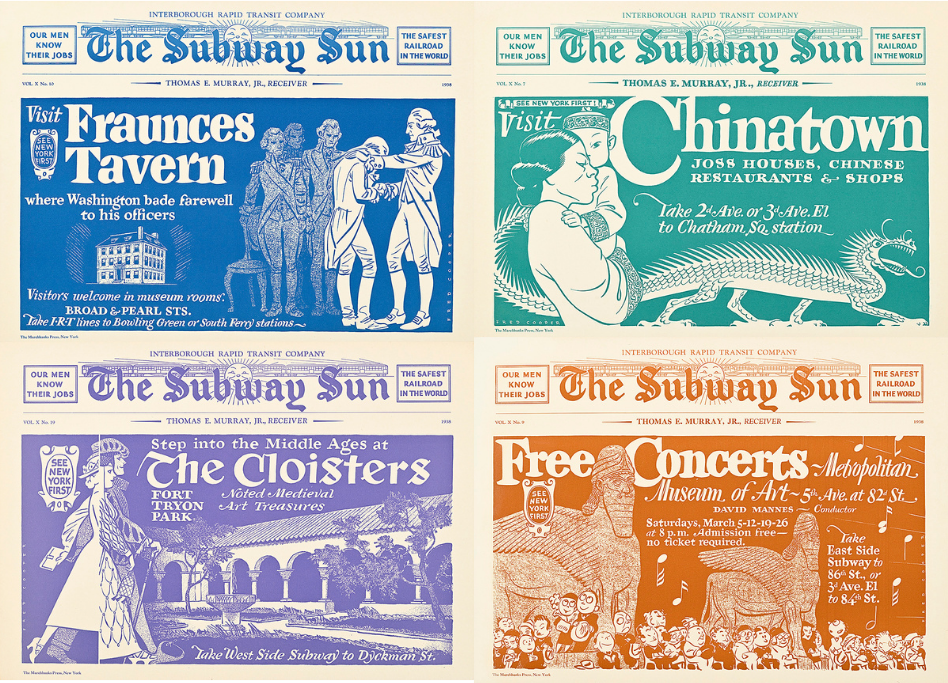
Thinking the subway is a form of hell is usually reserved for your grandmother with a terminal case of Fox News brain. It turns out, however, even true New Yorkers a century ago were wary the underground transit system was taking them on a ride to eternal damnation.
“They thought they were really close to Hell on the subway,” art curator Es-pranza Humphrey told The Groove. “It was literally being underground, with limited light.”
The perception that the fledgling transit system was buzzing by Beelzebub wasn’t exactly great PR for the attempt to revolutionize how New Yorkers got around. So the Interborough Rapid Transit Company — aka the IRT, which opened the city’s first subway as an independent company in 1904 — devised a plan. They’d make posters that looked like newspapers just for the inside of subway trains. And instead of advertising dermatology, real estate listings or marijuana use compensation studies, they’d advertise the city itself, an effort to encourage New Yorkers to use the subway to get out of their neighborhoods and explore the city.
Thus, The Subway Sun was born. You might have come across the paper before on a nostalgia train ride or in the Transit Museum gift shop. Now, you have a chance to see The Subway Sun images up close like straphangers of yore, in two exhibits open now that highlight the papers that decorated, entertained and informed the inside of subway cars for about 50 years.
One exhibit opened earlier this year at the New York Transit Museum and covers the full run of The Sun, its various artists and permutations, including the still-relevant etiquette-promoting tips about not holding the doors and avoiding a proto version of manspreading (see the image bottom left below).

The Transit Museum's Subway Sun exhibit includes the still-needed etiquette guides. (Photo by Filip Wolak/NY Transit Museum)
The second exhibit opens today at The Poster House in Chelsea and focuses on the kooky, zany and occasionally horny-eyed artwork in The Subway Sun advertising New York City to itself. It’s something that Humphrey, the exhibit’s curator, hopes will remind New Yorkers that for all its frustrations, urine smells and service changes, the train system is still the city’s warp tunnel to wonders. (Of the two exhibits, a Poster House spokeswoman said “true fans will want to see both, because they have different focuses.”)
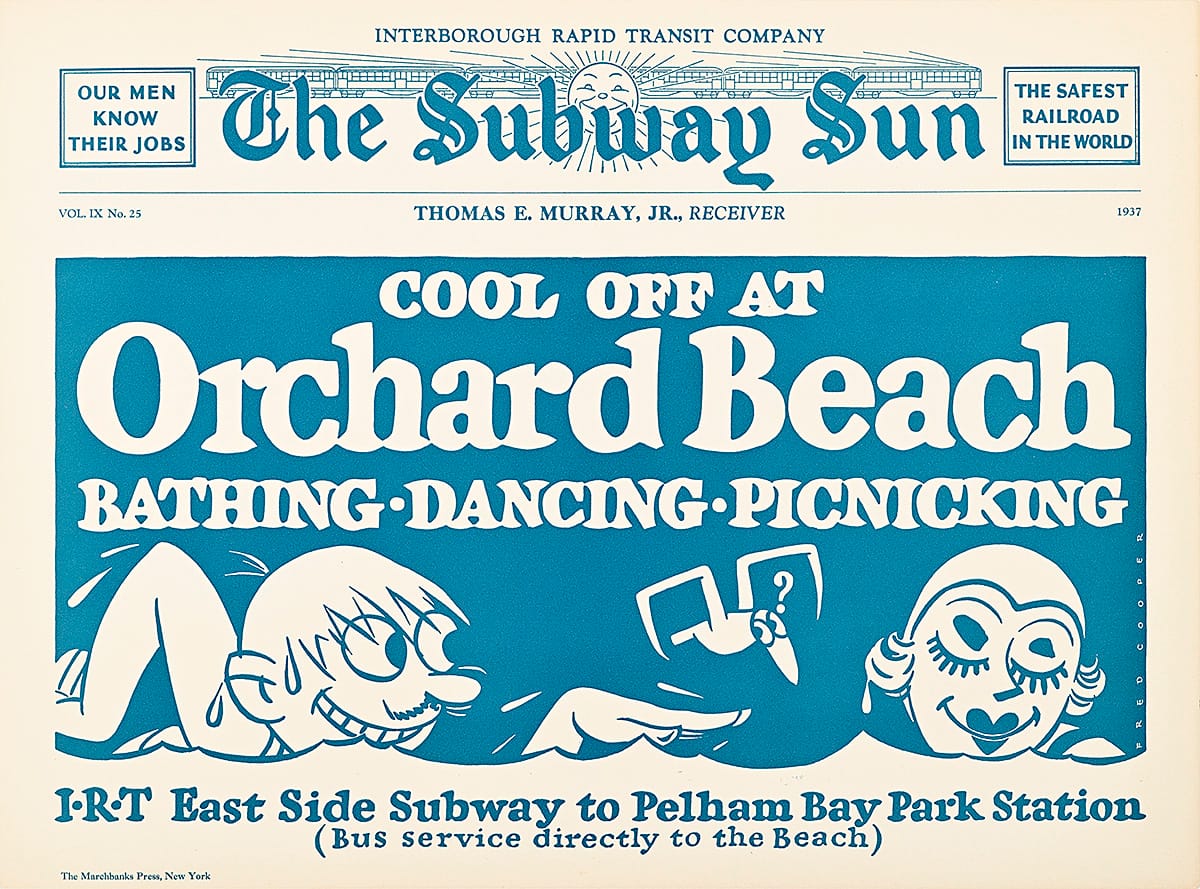
“It was not always this grueling metal vessel that just takes us to and from work with major delays,” Humphrey said. “It also was and can still be a beautiful resource to get us to places that we've never been to and become tourists in our own city.”
The Subway Sun artwork on display at Poster House was designed by Fred G. Cooper, a graphic artist who worked at Life magazine and drew political cartoons. He took the city’s landmarks — such as City Hall, the Cloisters and St. Patrick’s Cathedral — and imbued The Subway Sun ads with a sense of cartoonish glee and elegant humor that made the city look like a Chuck Jones animation cel come to life.
“What's unique about this exhibition is that as I looked at all of these posters, I realized that most of the places are still around,” Humphrey said. “I thought that was really interesting that New York was able to preserve its history. … And to this day, the same lines are still taking people to those places.”
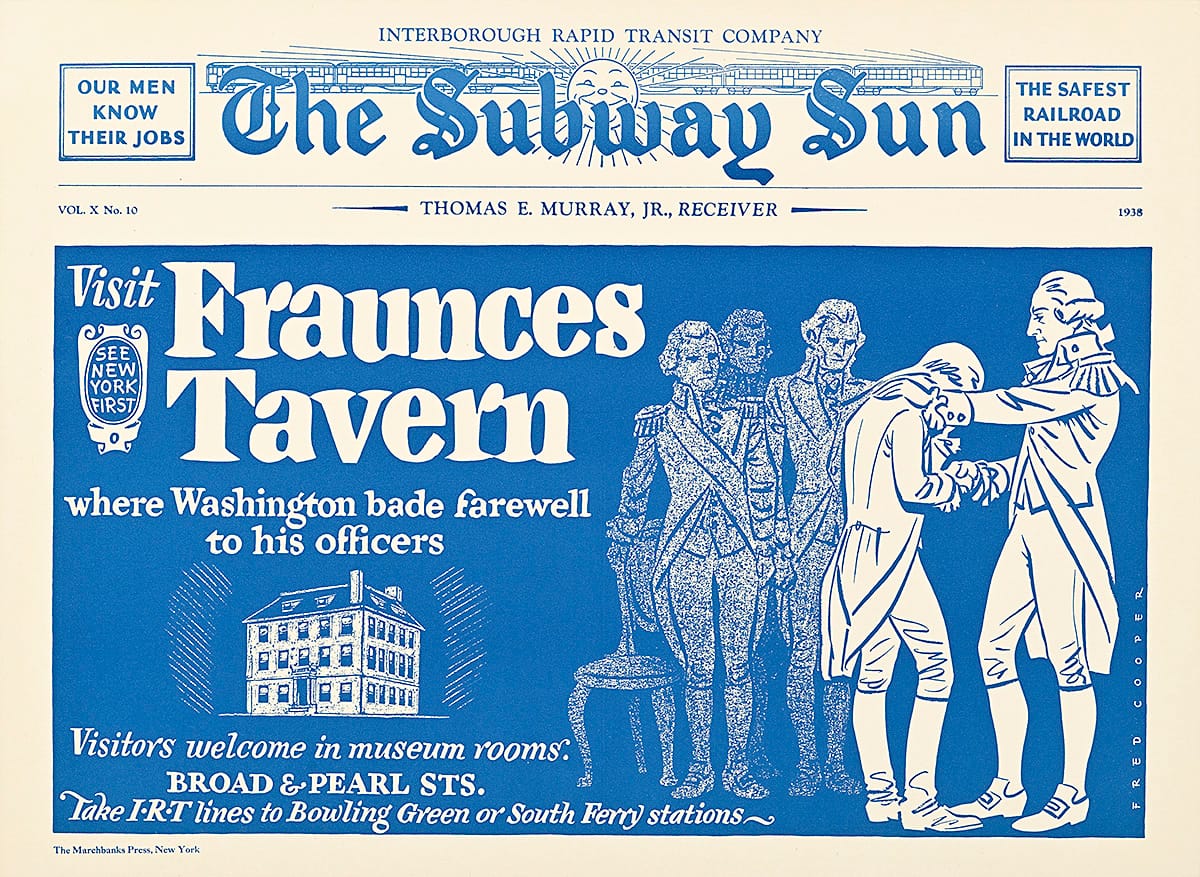
Indeed, for a certain segment of train fans, The Subway Sun itself has become an enduring relic of the charming past, like a subway token necklace. Here’s where I reveal myself as one of them: I’m a particular fan of Subway Sun memorabilia, not only for the vintage art styles or the inherent New York patriotism, but also because I’m a sucker for newspaper aesthetics.
Last year, around the time of the Mermaid Parade, the Transit Museum released a limited edition T-shirt run of the “reach the beach” Sun ad featuring a mermaid; I bought it immediately and told my fiance Callie that we could share it. When it arrived, I quickly cut the sleeves off to wear all summer long. We have never shared it. (The mermaid ad was created by Cooper’s successor, Amelia Opdyke Jones, whose work is on display at the Transit Museum). The Transit Museum still sells a few pieces of Subway Sun merchandise, but they're not the most exciting designs, imo. The Poster House is still considering selling merchandise from its exhibit.
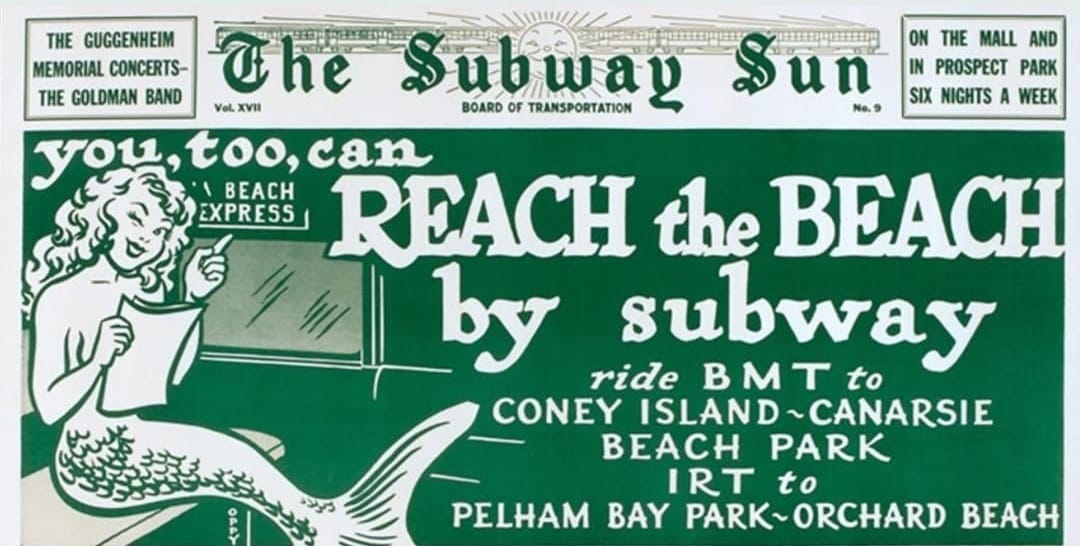
The Sun died out in the 1950s as more consumer-focused subway advertising took over the trains. By the 2010s, the subways were full of posters with the exact opposite message: ads from delivery apps and the like, arguing why you should never leave your house, blaring messages such as: “nothing ruins a good meal like other New Yorkers.” A decade later, the ads went digital, filling every car with baffling food hack videos and the same adverts for FX on Hulu shows that you can see anywhere else in America. But when Fred Cooper’s illustrations for The Subway Sun launched in the 1930s, there was nothing else to look at.
“We didn't have phones and so you have to kind of stare at something in the subway,” Humphrey said. “So to look up and to see it, it's colorful, it's funny sometimes, it can be more illustrative, so you have to lean closer to get those details.”
Humphrey is a Bronx native and a lifelong subway rider; her favorite piece in the exhibit is the one featuring Van Cortlandt House, the oldest house in the Bronx. Cooper included an image of a ghost, a British captain who died at the manor, showing that the artist did his research on these designs, she said. Humphrey misses the whimsy of subway ads when they had little details like that to be discovered.
“I do see a lot of in-car posters,” she said, “I don't know if I'm always laughing when I'm looking at them.”
Being able to still visit these places in The Sun ads — from Orchard Beach to the Fraunces Tavern — is like “a warm hug” from the past, she said.
“Just to have a piece of the past in this grueling metal container that we travel in, it reminds us of a time that was, or possibly a time that could still be,” she said.
The subway is under attack from outside forces, mostly various reality TV stars who currently run the federal government, who would rather lay under their own chauffeured SUV at the McDonald’s drive through than share a subway seat with a stranger. The trains are changing and getting less comfortable and all the ads — once something that helped mark the passage of time — will all be digital before long.
The Subway Sun attempted to bridge the gap between those outsiders who think the subway goes to actual hell and those of us who just live in Fun Hell, and encourage everyone to get off at different stops than usual.
“There are moments where we're entertained by performers, we're intrigued by the art, the in-car posters,” she said. “We find community complaining with the person next to us. If you're a person who rides the train, if you're a person who's okay with just stopping and looking around sometimes, then you can appreciate a show like this.”



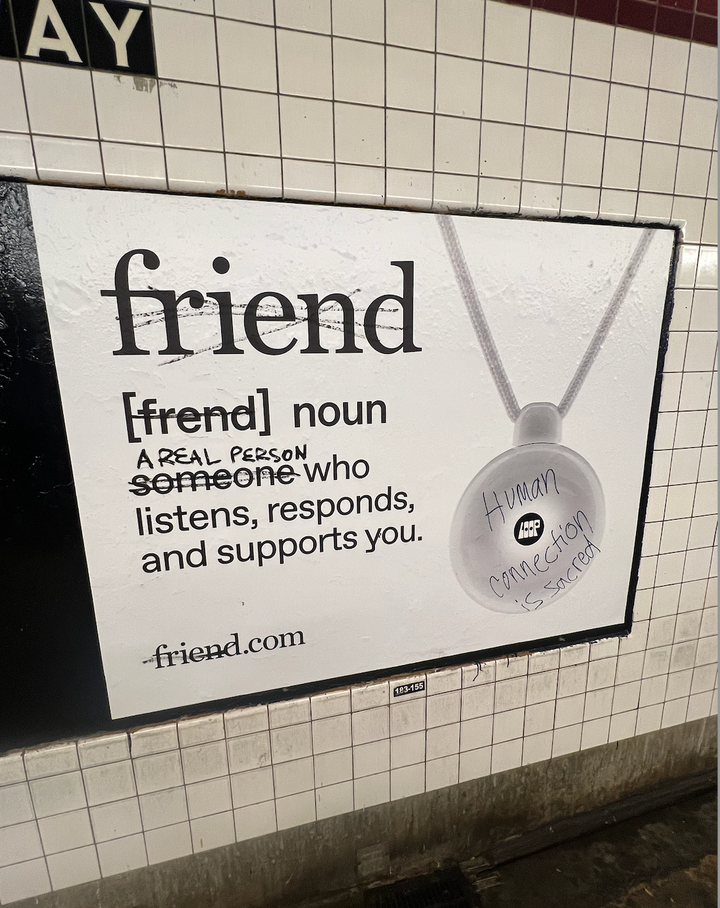
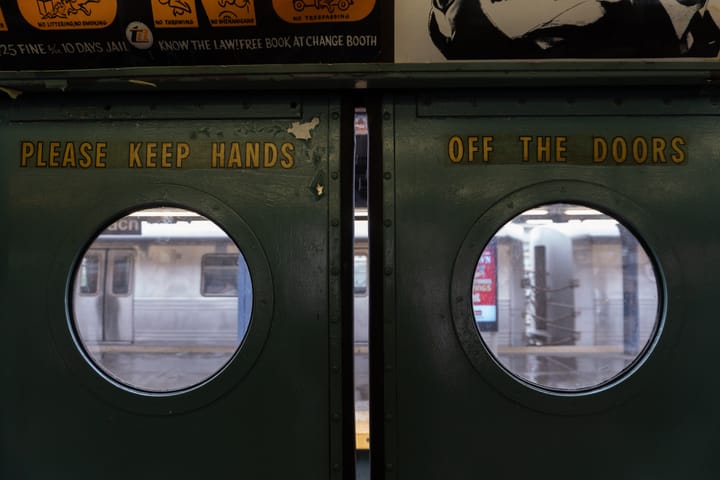
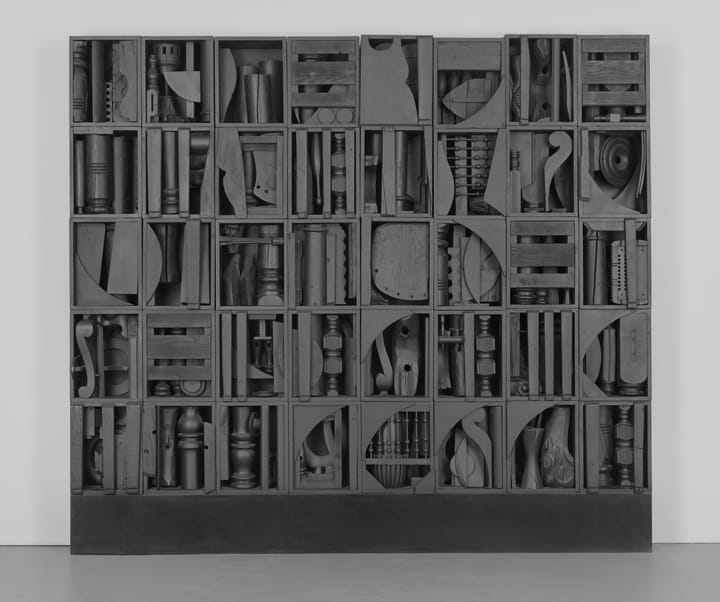
Comments ()